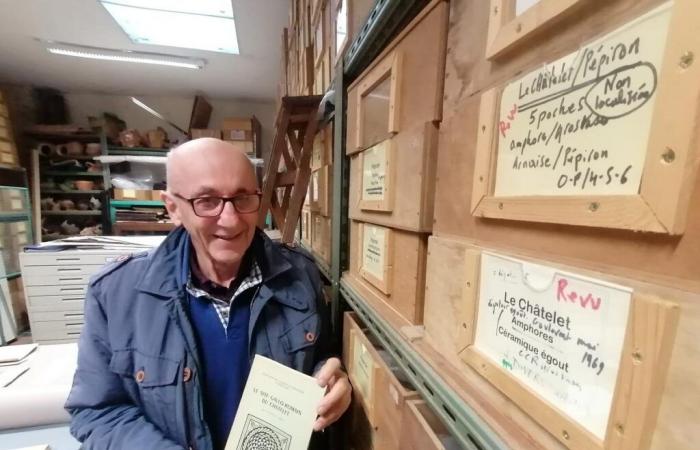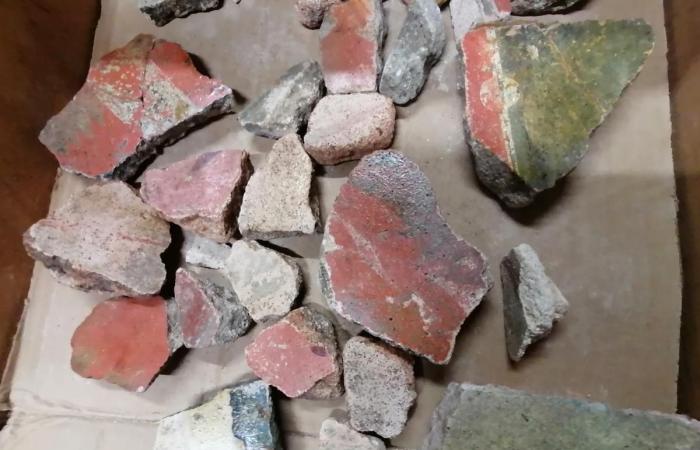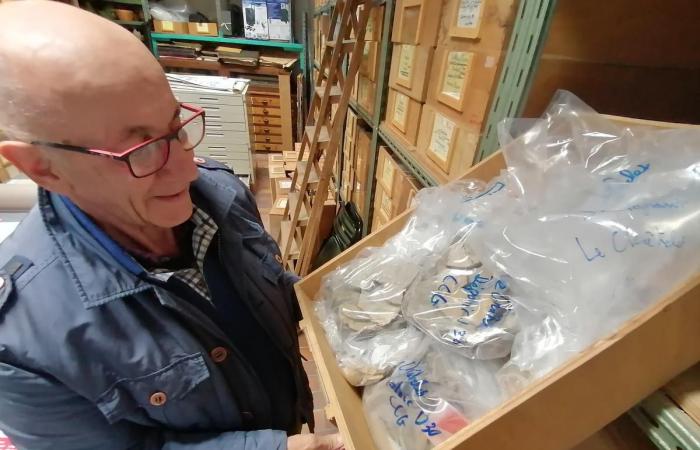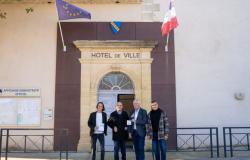Un day, the Châtelet site will perhaps have revealed the enigmas surrounding these Gallo-Roman remains buried underground and remaining confidential for centuries, until the end of the 1960s. The wood which covered the site since the Middle Ages has protected this site, long known only to “farmers”, reveals Philippe Duprat, co-president of the Rochefort Geographical Society.
Before the resumption of large-scale studies (read elsewhere), it was two members of the learned society, Camille Gabet and Paul David, who were the first and only ones to begin to lift the veil by carrying out archaeological surveys between 1967 and 1973.
One of the mosaics discovered, a rarity, near the coast.
Rochefort Geographical Society
They were then able to determine the existence, underground, of a vast building measuring 133 meters by 112 meters on each side, surrounded by a large gallery. It notably houses six rooms, including mosaics, overlooking courtyards or gardens “with colonnades and probable statuary decoration”, specifies Philippe Duprat.
Several built structures had also been identified outside this quadrilateral, notably a 500 meter long wall to the north of the building, a thermal complex to the south east, coupled with a water collector which overlooks the Arnaise river, a small tributary of the Arnoult 500 meters away.
Rare mosaics
“Apart from Paterre in Chaillevette, this is the only site to have mosaics near the coast,” continues the co-president of the geographical society.
These two-tone mosaics (black and white), combined with the discovery of furniture rich in architectural elements (painted coatings, fragments of columns, capitals) and ceramics (1), led to this Gallo-Roman villa being considered unique compared to others present in the sector, but with an agricultural vocation (Pépiron in Saint-Just-Luzac, Les Chapelles in Port-des-Barques and Le Renfermis in Soubise). Saintonge was dotted with villas and agricultural farms.
D. B.
Polychrome wall coatings from the Gallo-Roman villa of Châtelet, in Saint-Agnant.
Hence the emergence of several hypotheses: a sanctuary, that is to say a temple intended for deities (a less relevant hypothesis these days)? A vast thermal complex, which is corroborated by the presence of a heating system, but which would imply its inclusion in a substantial urban area? Or more surely a palatial villa (palace type) of a rich Gallo-Roman, an idea accredited by the luxury that emanates from it?
David Briand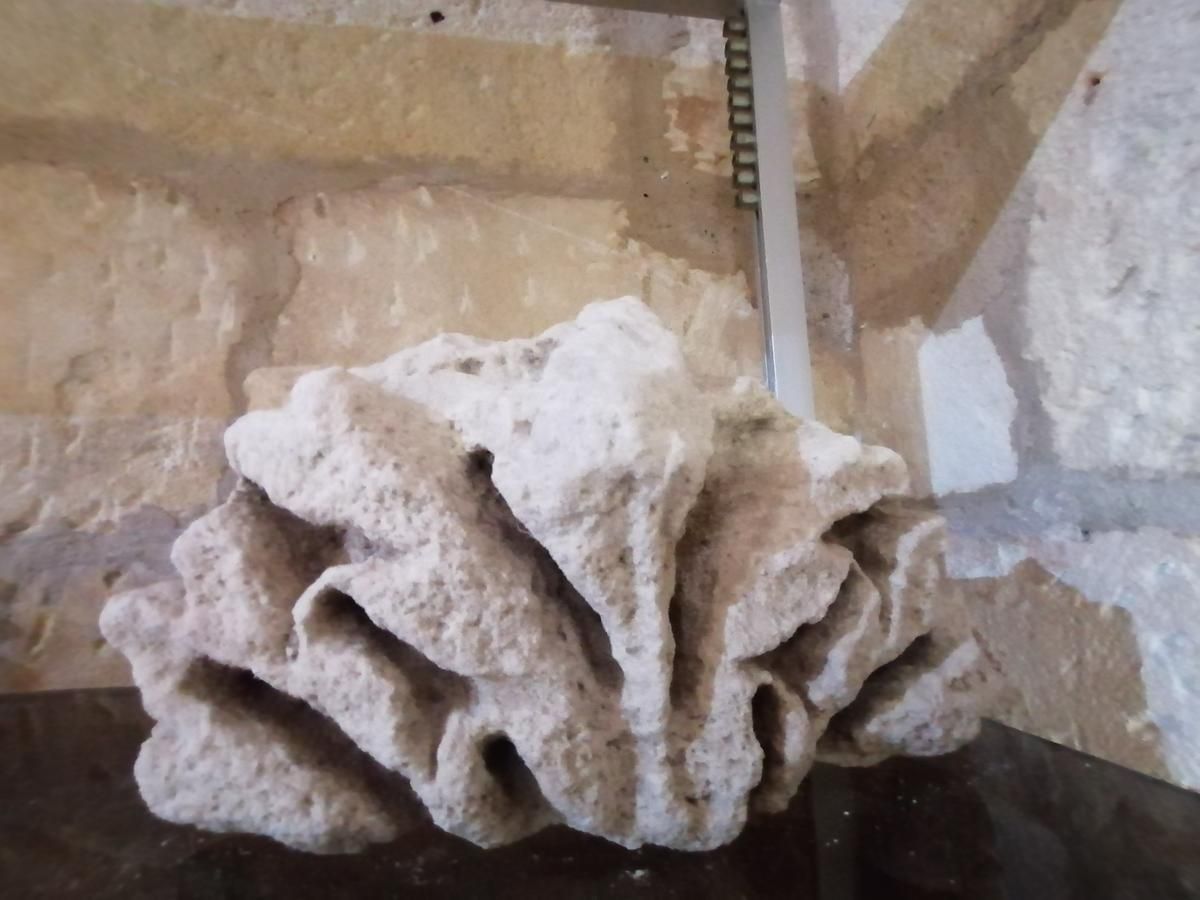
Elements of architectural decoration, such as columns, from the Châtelet site are exhibited at the Vieille Paroisse archaeological museum.
One thing is certain: archaeologists believe that it is a “monumental” site. When is it from? Furniture and objects collected during the unique excavation campaign reveal “an occupation of the Iis century after Jesus Christ (corresponding to the Roman occupation) until the early Middle Ages (the years 700 – 800 – 900)”, according to Philippe Duprat, specifying the possibility of uninhabited hollow periods.
Progress was made after the Xynthia storm in 2010 thanks to Lidar data (the analysis of the properties of a beam of light returned to its transmitter) used to refine topography levels in order to protect against future marine submersions. In doing so, this aerial laser remote sensing made it possible to measure and map objects and structures, even those hidden by vegetation. Result: “Alignments which follow the same orientation as the Roman structures have been brought to light”. Confirmation that the site extends over several hectares. Its exact nature remains to be determined.
D. B.
The re-examination of the abundant furniture preserved at the archaeological museum of the Vieille Paroisse is underway.
(1) exhibited at the Vieille Paroisse museum in Rochefort, avenue Rochambeau. Open Wednesdays from 2:30 p.m. to 6 p.m.
“Reexamine the site to understand it”
“We don’t know what this Gallo-Roman villa is. You have to re-study the site to understand it. » This is a major action which is beginning and which should last over several years.
Under the direction of Bastien Gissinger, design engineer at the regional archeology service of Drac (Regional Directorate of Cultural Affairs) Nouvelle-Aquitaine, a “re-examination of the abundant furniture preserved at the archaeological museum of the Vieille Paroisse is underway (painted coatings, architectural decor, marble, iron, coins, fauna) with the active participation of the geographical society,” indicates Philippe Duprat. “An update of what is known” which will precede geophysical surveys in the ground as well as new Lidar coverage.
So much preliminary research contributing to the creation of a file, an essential prerequisite before any new investigation. Excavations are not planned at this stage, knowing that the plots in question belong to around thirty different owners.

